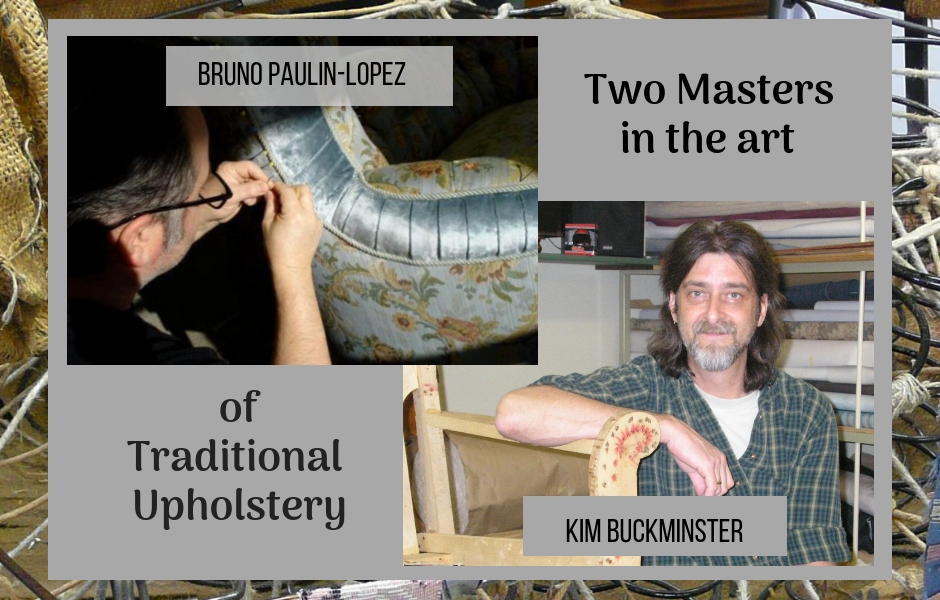
Traditional Upholstery is a beautiful thing
Speaking with new and seasoned upholsterers alike the topic of traditional upholstery usually arrises. Do you reuse the horse hair? What is this stuff that looks like hay? Yuk, it is so dirty who would want this in their furniture? That is how the conversation usually begins. But the real intrigue lies in the process, the hand stitching and the beauty that you cover up and no one ever sees. Not to mention the hours and hours it takes to produce a perfectly sculptured traditionally upholstered piece.
Photo’s of work by Buckminster Upholstery
Admiring a master in traditional upholstery
At the time I first began to learn upholstery my instructor adamantly said: “I don’t teach traditional upholstery because no one appreciates the time it takes and won’t pay for the labor involved.” He wasn’t 100% right, but being in business for 23 years I’ve found that he wasn’t completely wrong either. In 23 years I have only been asked once to reupholster a piece using traditional methods, therefore I have never pursued learning those skills which leave me in awe. I do however know and admire a great Master in the Art of Traditional Upholstery and someone I feel happy to call a friend. Oh, and did I mention we share the same name, Kim Buckminster of Buckminster Upholstery located in Falls City NE. (another Kim…)
Photo’s of work by Buckminster Upholstery
From another Kim…..
Kim(I’ll call him Buck from now on to avoid any confusion) and I recently had a lengthy conversation about Traditional vs Modern Upholstery that I want to share with you. At the age of 5 Buck’s mother introduced him to sewing. From there Buck began learning furniture refinishing, woodworking, working with leather and so on. Buck was fortunate to have formal education in upholstery at Nebraska’s oldest college, Peru State in 1975. This training was more so about modern upholstery but having the intrigue for the traditional upholstery Buck used all the resources he could find and taught himself this wonderful skill. His business venture in upholstery had begun! Buck has won several awards for his work over the years.
Labor intense, oh yes, worth it
So I asked Buck about what percentage of his business was Traditional versus Modern Upholstery. I was surprised to hear that it is pretty much 50/50! So yes there is a need for this old world skill. We also discussed the labor and time it takes to complete one over the other. Buck can do two modern pieces for every one traditional piece that he completes, depending on the specific project. Labor intense, oh yes, worth it? Most certainly but you must have the right clients. “Who are the clients that want this type of work,” I asked. “Museums, Collectors and those who see the sentimental value in a piece.” was Bucks reply.
Traditional upholstery is a skill
We also discussed the learning curve for traditional upholstery. This is not a skill that can be easily learned and it can’t be taught in just one class. It takes YEARS to hone these skills even more so than with modern upholstery. When I asked Buck about charging for this skill he agreed that not all clients would pay what the labor was really worth and that sometimes when doing full-on traditional upholstered piece his hourly wage was less than that of a piece done using modern techniques. When Buck feels traditional upholstery is what the piece deserved he does it regardless. Clients like the museums and collectors understand the value.
Photo’s of work by Bruno Paulin-Lopez
Traditional Upholstery is sculpting shapes
Wanting more than one perspective I also reached out to Bruno Paulin-Lopez owner Atelier de France, Inc.
Albany, New York Area. I had seen the beautiful work Bruno creates but never had the opportunity to meet or talk to him. When I reached out to Bruno he was more than happy to have a conversation about something that he was so passionate about. Bruno started learning upholstery by attending a technical trade school in France where he attended for several years (La Bonne Graine). While talking with Bruno I could hear the passion in his voice for this art form we call upholstery. When I asked what his favorite part was he said “sculpting shapes” I had never thought of it in that manner but I could hear the pride and love for the trade as he said the words. If you think about the process you are doing just that, sculpting the arms into a beautifully rounded shape. Hmmm, I do like that descriptive word.
Traditional Upholstery requires a certain clientele
Bruno’s work ratio between traditional and modern upholstery was a bit different than Buck’s. When Bruno had a crew of 5 upholsterers, 2 seamstresses and one apprentice his ration was 80% modern upholstery to 20% traditional. At that time the spectrum of Bruno’s clients ranged from the everyday client, elite clientele to museum work. Today Bruno is working alone and his work is…. Are you ready for it? 100% Traditional, yes you read that right 100%!! So, of course, I asked: “What type of clients do you have?” Bruno works exclusively for Museums, collectors, and institutions! We then talked about the time it takes and he too agreed that traditional upholstery takes longer to produce than using modern. When I found out that for many years Bruno’s business was literally 20 minutes from me I was saddened that I had not known this at the time. Ugh, a missed opportunity.
Photo’s of work by Bruno Paulin-Lopez
Modern materials versus traditional upholstery materials
I discussed the traditional materials used to create these masterpieces with both Buck and Bruno. Of course, there is the jute webbing, jute tying twine for springs and burlap which we all use in modern upholstery too, but then there is the coir, Spanish moss(Buck uses this), horse hair, and natural cotton. So you can see that some of the items are the same and some are very different. One thing I found very interesting when Buck and I dove deeper into these supplies was the cost comparison. Many of the manufacturers today use foam as padding. These items tend to be more expensive than traditional materials like cotton and horse hair. Also in our conversations, we discussed cushioning which again seemed to be more costly with today’s foam prices. Using a Marshall unit and Cotton for a cushion, these materials cost less but! The time in labor to create is greater. Marshall unit seating also tends to be quite comfortable but the cushion weighs a ton when finish
Offering Traditional Versus Modern Upholstery
The skill and talent that goes into upholstering a piece using traditional methods is unique and in my opinion a thing of beauty. As you’ve heard from two great upholsterers it requires a specific client base to maintain an upholstery business specializing in traditional upholstery. Do I love the idea of traditional upholstery, Oh yes! My location, unfortunately, has never been one that this type of upholstery would have paid the bills. Buck and Bruno have formed a name for themselves with museums and clients around the country. They have created a desire for what they have to offer. Many of you strive to create that desire for the work you do and it doesn’t happen overnight. Kudos to them both for keeping the art of Traditional Upholstery alive and well.
I hope you enjoyed reading my blog and I encourage you to take a look at both of these talented upholsterers on their websites as well as social media. You will find some great videos on YouTube where Buck shares his skills, and Bruno will be teaching in New York this year to a handful of lucky students.


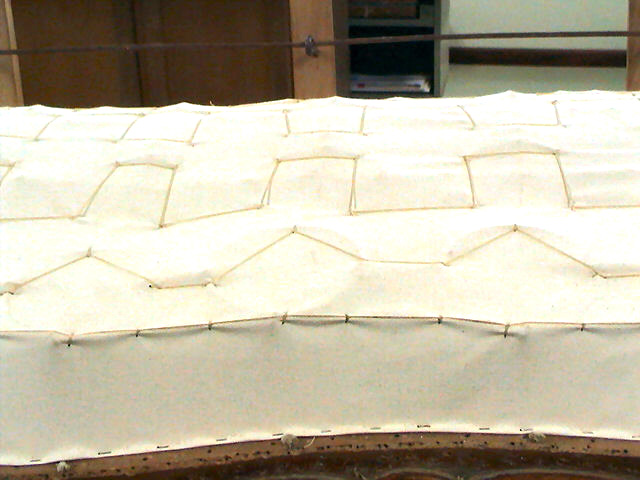




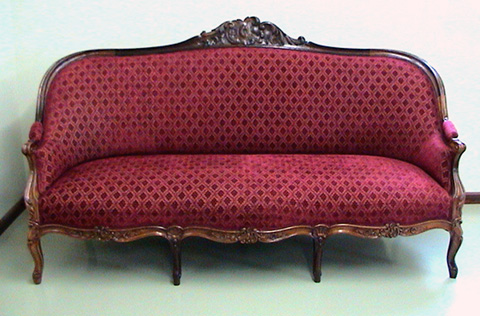
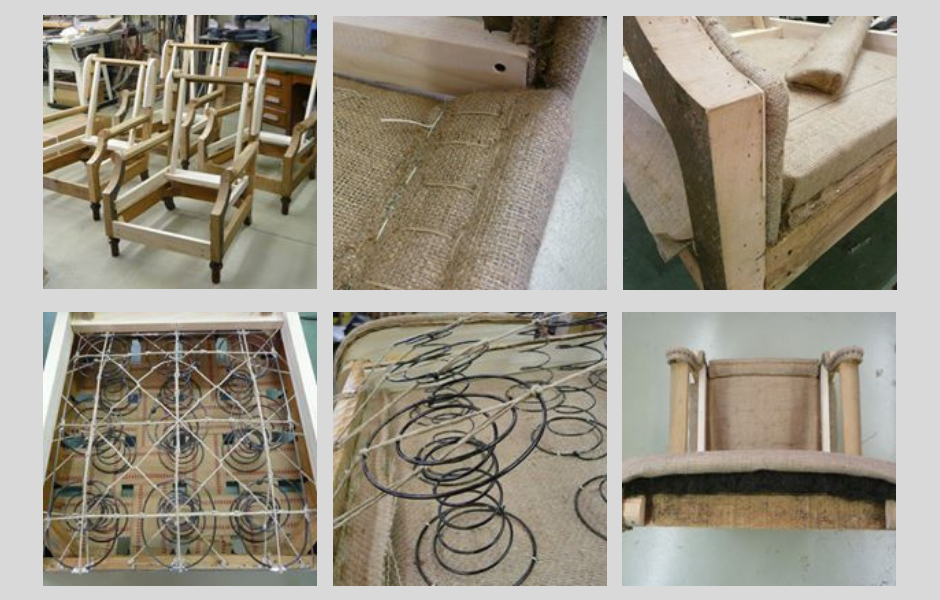

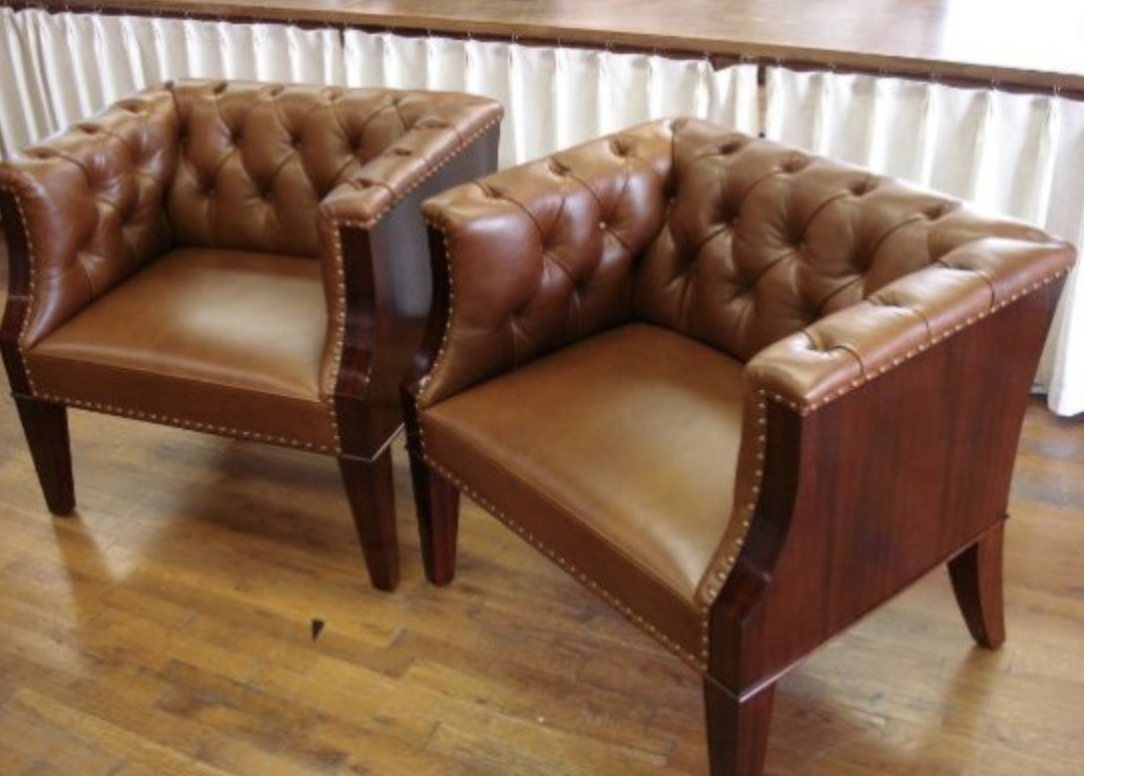
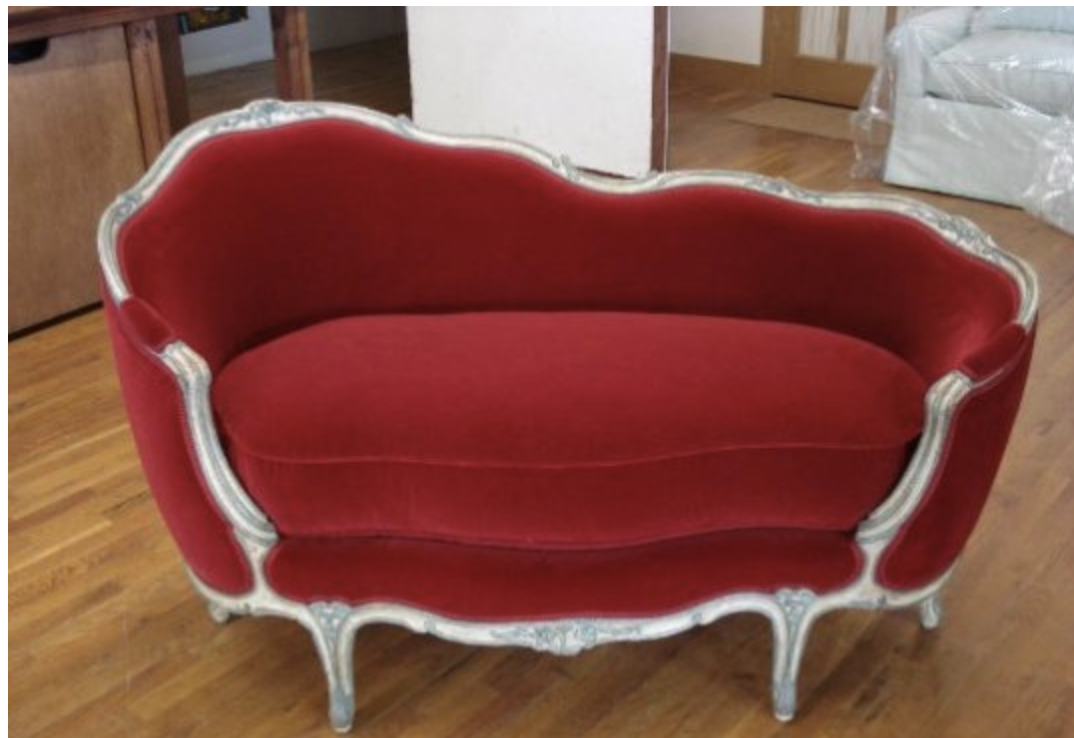
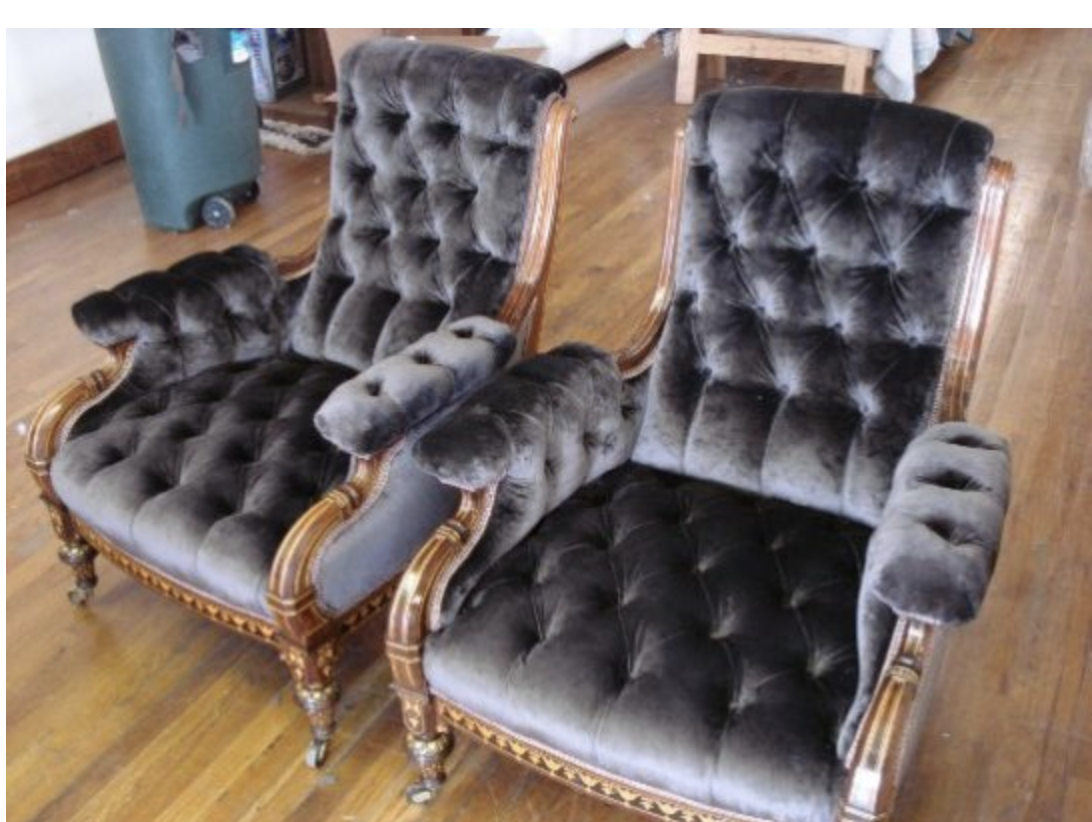

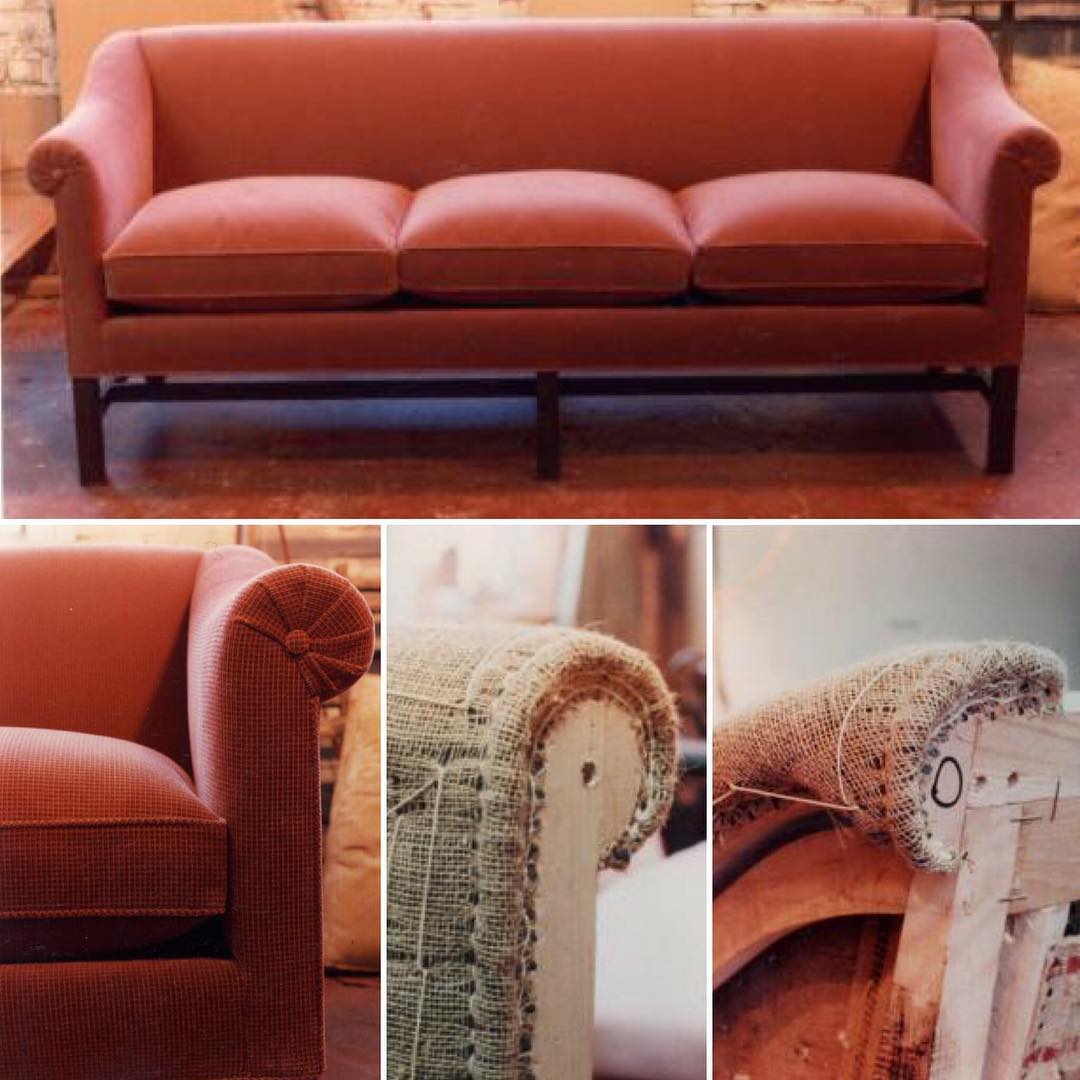
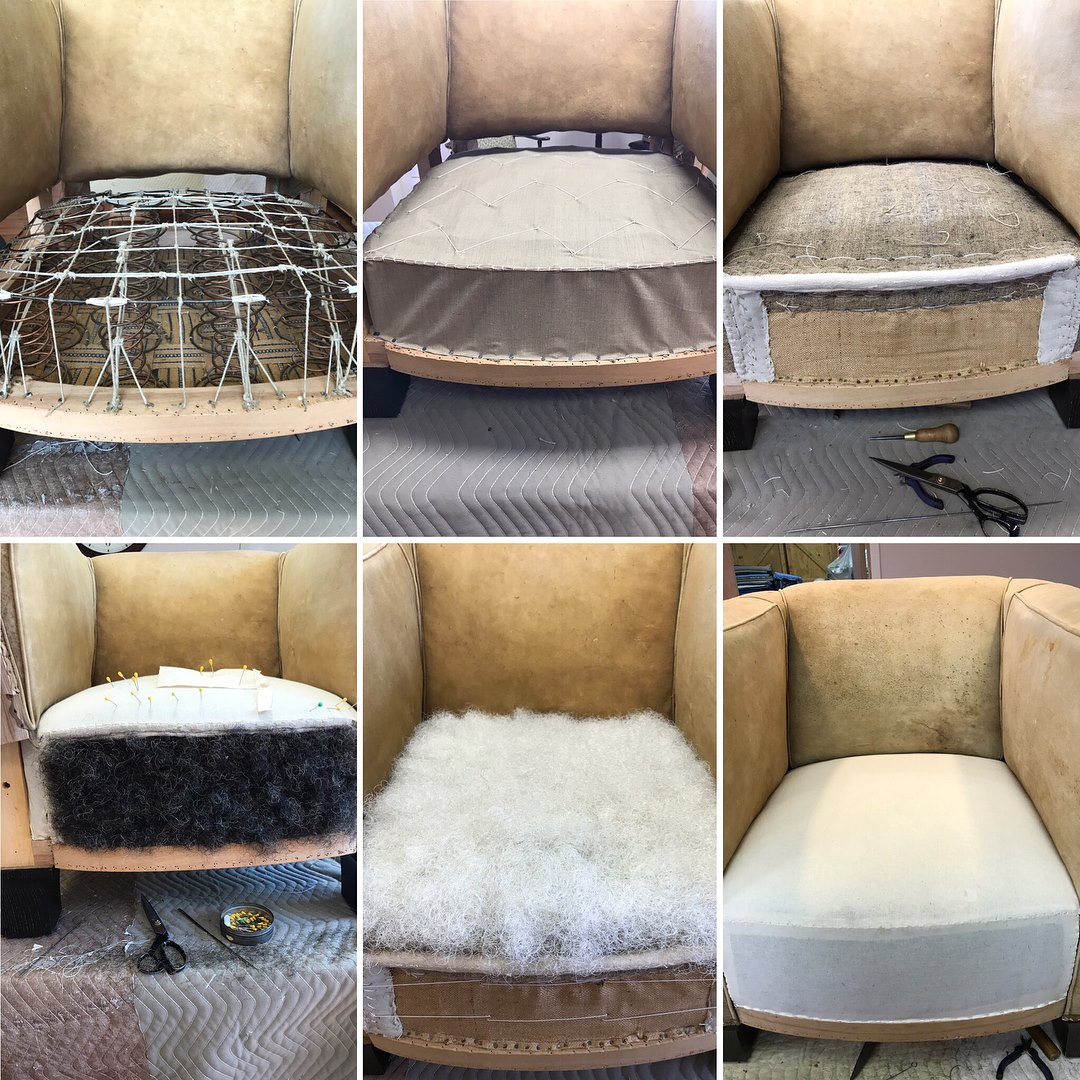
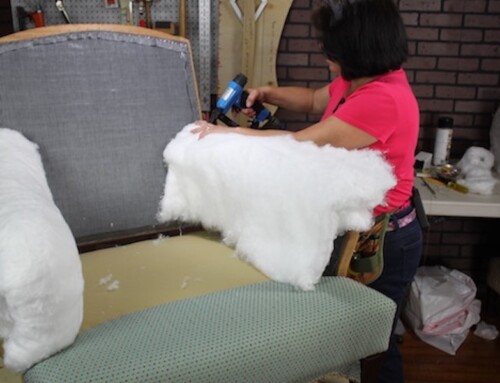
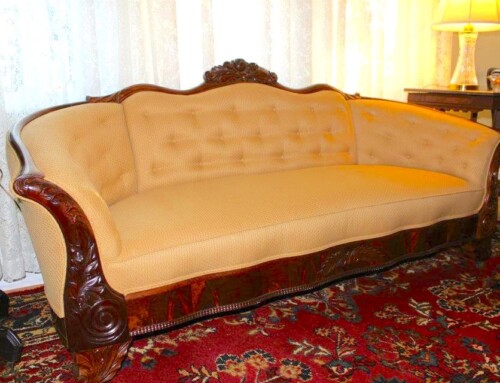

I really appreciate Bruno pointing out his pleasure in “sculpting shapes”. I would like to expand on that thought by entering “and feeling”. It is very rewarding to draw your hands down the profile of a smoothly crafted arm or across a serpentine seat facing. Something I’ve often said is that our means of sculpturing is unique that it is flexible, moving and then retaining it’s original shape. My background and Bruno’s are opposites on the map. I come from the cornfields and cow lots of Nebraska… Nicely done article ‘tother Kim. “Buck”
Hi Buck, thanks for your feedback. I totally agree with your assessment of what we sculpt being “flexible” and maintaining it shapes even though there is movement. I truly appreciate your talent and time you took to chat with me. One day I hope we meet in person!
Kim
Thank you Kim for introducing these wonderful master upholsterers. I’ve the pleasure of knowing and working with a a traditional upholstery in Bantam CT. He apprenticed from a European master years ago. His frustration today is clients lack of knowledge and appreciation for the skills. As a campaign to educate maybe we shouldn’t cover the layers with fabric! The deconstruction look is art too! I’m going to be more patient and not skip steps that these fine men have shown us are valuable in the finished piece.